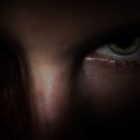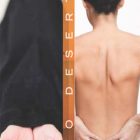The Bees and Rapture
The Bees and Rapture
Carol Ann Duffy
Farrar, Straus and Giroux, March 2013
96 pages / 80 pages
$23.00 / $15.00
Editor’s note: P. Scott Stanfield holds a Ph.D. in English and teaches literature at Nebraska Wesleyan University. Recently, I challenged him to see how many references to other works and artists he could make in a single 500-word review. He gets one point for each, or two for any he hasn’t used in a previous column. Last month’s score: 21; this month’s score: 29; all-time record: 31. —Andrew Ladd, Blog Editor
Carol Ann Duffy is the current poet laureate of the United Kingdom—the first woman, the first Scot, and the first openly LGBT individual to hold the honor (among her purportedly straight, male, and English predecessors are Dryden, Wordsworth, Tennyson, and, er, Alfred Austin). She has long been well known in the U.K. (she is in the most recent edition of the Norton Anthology of English Literature, Scot though she is), but only some of her work has been published in the United States. Farrar, Straus and Giroux are beginning to make things right by publishing Duffy’s latest collection, The Bees (which appeared in 2011 in the U.K.), along with her previous collection, the winner of the T.S. Eliot prize, Rapture (2005).
The Bees gives an American reader a useful idea of Duffy’s range. In Great Britain she is often considered a plain-spoken, direct poet, widely taught in the schools, but compared to our own plain-spoken school—Ted Kooser, say—she is as lyrical as Hopkins. She rhymes, she alliterates, she constructs stanzas, she works to a loosely iambic rhythm. Like Thom Gunn, she draws on the rich musical resources of English lyric tradition, more so than even the most conservative of our poets do, without ever sounding fusty or retrograde.
As befits a volume by a laureate, The Bees includes some celebrations of things British: the names of pubs (“John Barleycorn”), the names of counties (“The Counties”), whiskey (“Drams”). It pulls no punches, though, when taking up agricultural pollution (“Ariel”) or British complicity in our war in Iraq (“Big Ask”). It revisits Greek myth (e.g., re-envisioning Yeats’s sonnet “Leda and the Swan”) and movingly elegizes Duffy’s mother. Bees are a leitmotif holding the volume together, sometimes a vision of matriarchal society, sometimes as victims of insecticides, sometimes as figures of the artist, roaming, gathering, coming home, producing.
The Bees is the kind of book one enjoys and respects; Rapture is the kind one revisits, recommends to others, and awards a place in the memory uniquely its own. Containing fifty-two poems, few longer than a page, Rapture can be easily read in one sitting, and you will probably do exactly that, for its momentum is irresistible. The poems trace the course of a love affair from its intense, ecstatic beginning to its collapse and end. Given such famous antecedents as Petrarch, Shakespeare, Elizabeth Barrett Browning, and John Berryman, it seems inevitable that many of the poems are sonnets or near-sonnets, but Duffy is a sufficiently gifted prosodist to keep things interesting, and her tonal range astonishes.
Sometimes we get the astringency of Plath (“Your Move”), sometimes the moonlit forest eroticism of the first part of Coleridge’s Christabel, sometimes a wry joke on conducting romance via text messages. Rapture deserves a spot on American shelves and in American syllabi; cheers to Farrar Straus and Giroux for making that possible.



